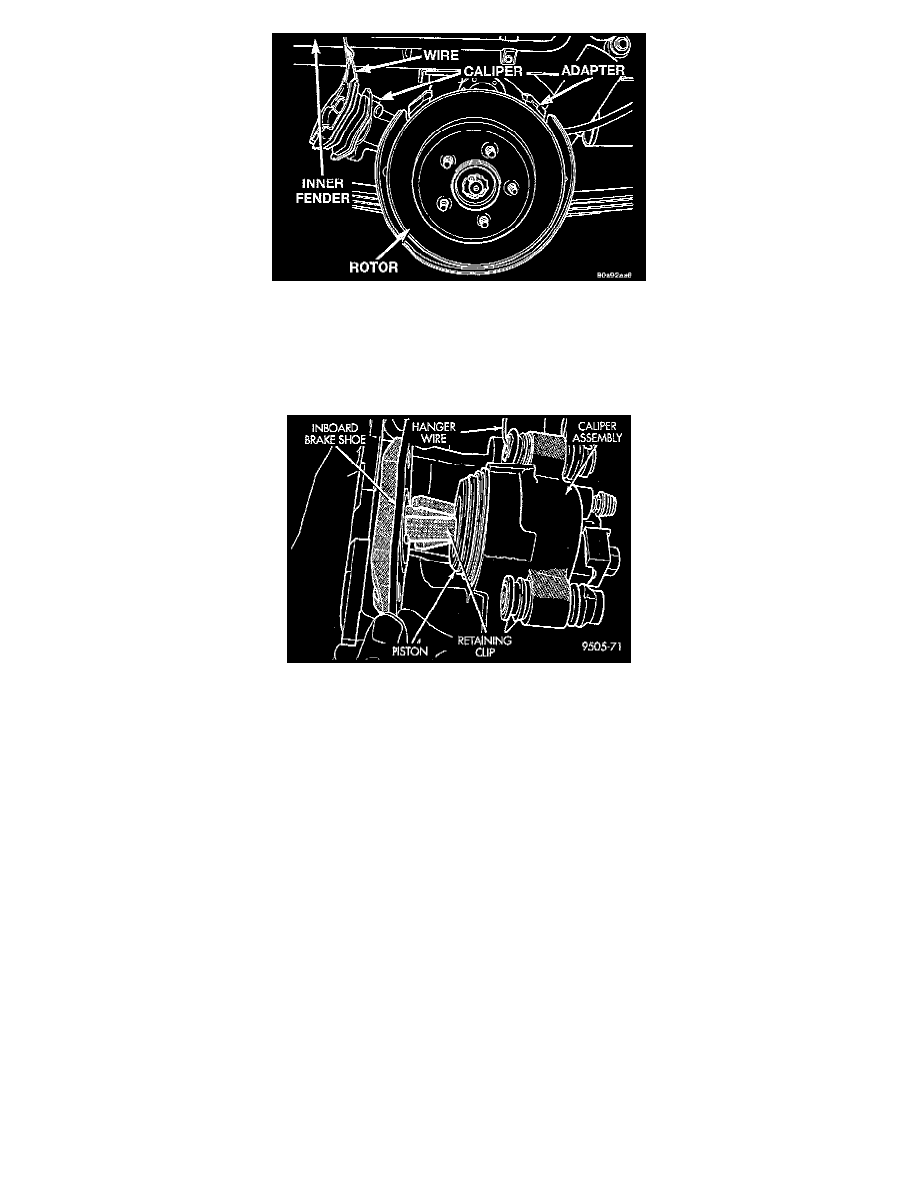Grand Voyager V6-201 3.3L VIN R SMFI (1997)

Correctly Supported Caliper
5. Support caliper to prevent the weight of the caliper from damaging the flexible brake hose.
6. Remove the rear rotor from the hub by pulling it straight off the wheel mounting studs.
7. Remove the outboard brake shoe from the caliper. Brake shoe is removed by prying brake shoe retaining clip over raised area on caliper and the
sliding the brake shoe off the caliper.
Removing Inboard Brake Pad From Piston
8. Remove inboard brake shoe from caliper. Inboard brake shoe is removed by pulling it out of the caliper piston, until the retaining clip is free of the
piston.
9. Check for piston seal leaks (brake fluid in and around boot area and inboard lining) and for any ruptures of the piston dust boot. If boot is
damaged, or fluid leak is visible, disassemble caliper assembly and install a new seal and boot (and piston if scored). Check the caliper dust boot
and caliper pin bushings to determine if they are in good condition. Replace if they are damaged, dry, or found to be brittle.
Installation
WARNING: Although factory installed brake linings are made from asbestos free materials, some after market brake lining may contain
asbestos. This should be taken into account when servicing a vehicle's brake system, when after market brake linings may have been installed
on the vehicle. Always wear a respirator when cleaning brake components as asbestos can cause serious bodily harm such as asbestosis and or
cancer. Never clean brake components by using compressed air, use only a vacuum cleaner specifically designed for the removal of brake dust.
If a vacuum cleaner is not available, clean brake parts using only water-dampened shop towels. Do not create brake lining dust by sanding
brake linings when servicing a vehicle. Dispose of all dust and dirt suspected of containing asbestos fibers using only sealed air tight bags or
containers. Follow all recommended safety practices prescribed by the Occupational Safety And Health Administration (OSHA) and the
Environmental Protection Agency (EPA), for handling and disposal of products containing asbestos.
CAUTION: During service procedures, grease or any other foreign material must be kept off brake shoe assemblies, and braking surfaces of brake
drum and external surfaces of hub/bearing assembly. Handling of the braking disc and caliper. Should be done in such a way as to avoid deformation of
the disc and scratching or nicking of brake linings. If inspection reveals that the square sectioned caliper piston seal is worn or damaged, it MUST be
replaced immediately. During removal and installation of a wheel and tire assembly, use care not to strike the caliper.
NOTE: Step 1 below is only required when installing a caliper after new brake shoes have been installed.
1. Completely retract caliper piston back into piston bore of caliper assembly.
2. Lubricate both adapter abutments with a liberal amount of Mopar Multipurpose Lubricant, or equivalent.
